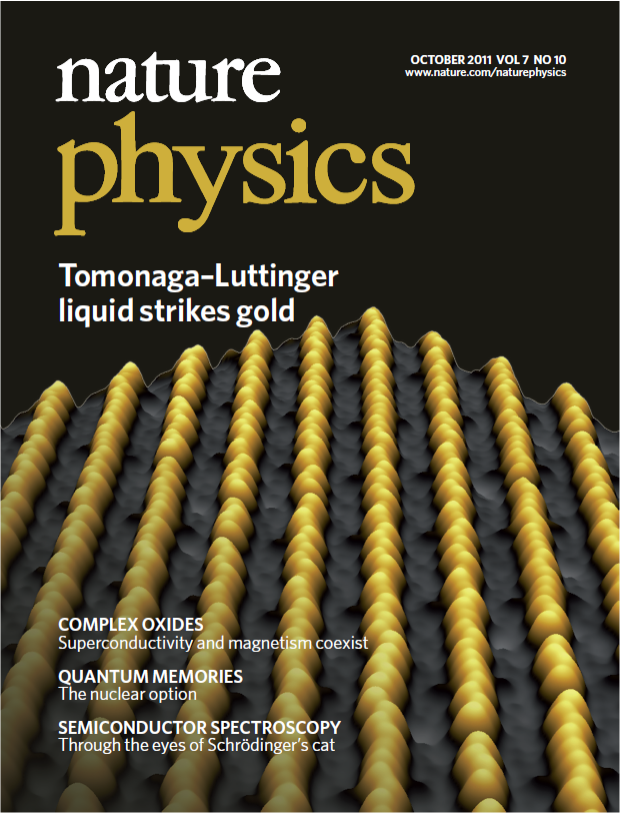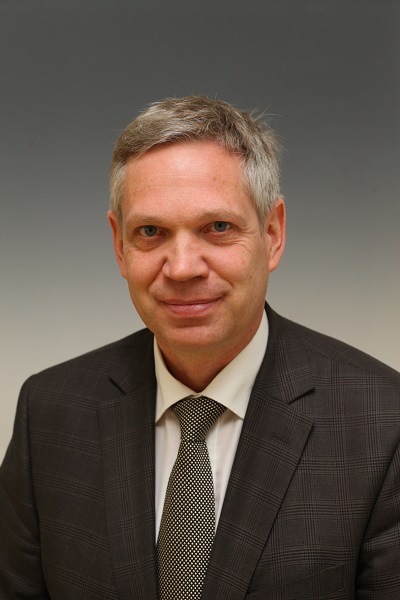Surfacephysics
Luttinger Liquids
After some very successful work on one-dimensional electron systems, research in Experimental Physics II is focusing in recent years on the study of Luttinger-liquids. This exotic state of metals occurs in one-dimensional electron-systems. After the theoretical prediction of this state in the 1960s, only a few systems have been found so far, in which this state can be demonstrated experimentally. Accordingly, Luttinger-liquids attracted a lot of attention in the scientific community. In collaboration with a research-group at the University of Würzburg, we have discovered in 2011 a new system that seemed to allow for the first time the manipulation of a Luttinger-system on an atomic scale – gold nanowires on Ge (001). Thus, a variety of exciting questions became experimentally accessible.
However, in the past 5 years, we have discovered a couple of problems with this system. The goal of one of our projects was to change the dimensionality of the system from the one-dimensional atomic wires to a two-dimensional network by using molecular bridges in order to investigate how the properties of the Luttinger-liquid change as function of dimensionality. The project, however, was less successful than expected, since all molecules studied so far scatter the electrons more than they provide conducting channels for the electrons. In addition, the structure of the system is still unclear and there is increasing evidence that the one-dimensional conduction channels are not located on top of the surface but below the surface. Thus, the proposed manipulation with surface science methods is far more difficult than initially assumed.

As part of another PhD-study, we had planned to study the Kondo-effect in a Luttinger-liquid. In Kondo-systems, the magnetic moment of a local atom is shielded by the magnetic moments of the free electron gas in the environment. This leads to clear signatures in scanning tunneling spectra (peaks with Fano profile at the Fermi energy). If the electrons are restricted in their movement by the Luttinger-liquid, the shielding is expected not to take place to the same extent as in a 2D or 3D electron gas and the signatures in scanning tunneling spectroscopy are expected to change. After intensive attempts to achieve a suitable preparation of individual cobalt atoms on gold nanowires on Ge(001), various problems with this system have arisen. On the one hand, the cobalt was too mobile on the surface and on the other hand it scatters the electrons in the nanowires too much.
Autler-Towns splitting
Another research project in recent years is the construction and optimization of an ultrahigh vacuum system for angle-resolved photoemission measurements (ARPES) on metal surfaces in conjunction with femtosecond laser-pulses. Attempts have been made to observe physical effects, which are normally observed on molecules in the gas phase, on metal surfaces (Autler-Towns-splitting). For this propose a model system – Cu(111) – with a particularly long-living surface states has been used. A UHV system has been built from components that were available and an electron-energy analyzer has been modified in order to measure electrons with very low energy. Commercial analyzers are often unsuitable for this energy range. It is planned to achieve the "proof of principle" in order to apply for a funded project with a time-of-flight spectrometer. As part of a PhD-study, extensive quantum mechanical calculations were made of the expected effects to find optimized experimental conditions for an observation of an Autler-Townes-splitting. It turns out that multiphoton excitations provide a rich and interesting zoo of effects, but the intensity with existing equipment was too small so far for systematic experimental studies.
References
C. Blumenstein et al., Nature Physics 7, 776 (2011)
Prof. Dr. René Matzdorf
full member

- Telephone
- +49 561 804-4798
- maniak[at]uni-kassel[dot]de
- Location
- Universität Kassel
Fachbereich 10 - Naturwissenschaften & Mathematik
Institut für Biologie
Heinrich-Plett-Straße 40
34132 Kassel
- Room
- 1601
